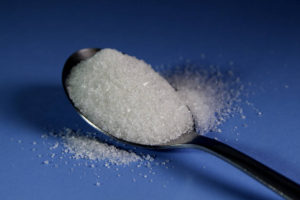WSJ Historically Speaking: The More-Bitter-Than-Sweet History of Sugar
 ‘If sack [wine] and sugar be a fault, God help the wicked,” says the rollicking Sir John Falstaff in Shakespeare’s “Henry IV, Part 1.” That was a more innocent time. Nowadays, books such as Gary Taubes’s “The Case Against Sugar” have linked it to many of the world’s health crises, including diabetes, obesity and high blood pressure.
‘If sack [wine] and sugar be a fault, God help the wicked,” says the rollicking Sir John Falstaff in Shakespeare’s “Henry IV, Part 1.” That was a more innocent time. Nowadays, books such as Gary Taubes’s “The Case Against Sugar” have linked it to many of the world’s health crises, including diabetes, obesity and high blood pressure.
For the first few thousand years, man and sugar lived peaceably together. Sugar-cane cultivation started in Papua New Guinea around 8000 B.C., reaching India by 6000 B.C. Then, in 326 B.C., Alexander the Great led his armies into India and introduced sugar cane to the West. After that, vast riches awaited those who could control sugar’s means of production.
By A.D. 750 or so, the Arabs were the undisputed kings of sugar. Despite the Crusades and other bloody confrontations, the Arabs found a whole new market in Europe. The Latin translation of Arab medical texts—particularly the 11th-century “Tacuinum Sanitatis,” which claimed that sugar was “good for the blood”—influenced European attitudes. For centuries, sugar was more of a cure-all than a condiment; medieval apothecaries prescribed it for coughs, colds, melancholy and intestinal ailments.
The Venetians were among the first to challenge the Arab sugar monopoly. But it was the Spanish and Portuguese who ushered in the Age of Slavery after they began growing sugar on deserted islands off Africa. The Portuguese populated them with convicts, African slaves and even Jewish children stolen from their parents.
Christopher Columbus had worked on the islands of Madeira, a Portuguese sugar colony, as a young man—which was why, when he landed on Hispaniola in 1492, he knew that the Caribbean would have the perfect environment for sugar production. His son, Diego, was among the first to build sugar plantations on the islands and the first to face a major slave rebellion. The uprising, on Christmas Day in 1522 on the island of Santo Domingo, was crushed with extreme ferocity, setting a brutal precedent other islands adopted.
Until its abolition in the early 19th century, the slave trade brought four million slaves to the Caribbean, and almost all worked on the sugar plantations—so that Europeans could gorge themselves on treats. Elizabeth I was so addicted to sweets that her teeth became rotten, giving her foul breath that could be smelled several feet away.
Sugar’s greater availability as an ingredient and a condiment coincided with the rising popularity of tea, chocolate and coffee—and a network of cafes, clubs and salons to consume them. In the 18th century, patrons were trading the ideas of the Enlightenment even as they helped themselves to spoonfuls of sugar grown by slaves.
By the mid-19th century, sugar cane’s mighty sway had begun to fade as Europe and America found that beets grown in fields in their own countries could provide refined sugar as well. But sugar-cane imports continued, and for decades the U.S. used sugar tariffs—raising or cutting them—to further its political interests around the world.
More than 400 years ago, the royal French physician, Joseph Duchesne, called sugar toxic, saying: “Under its whiteness, sugar hides a great blackness.” He was right.
